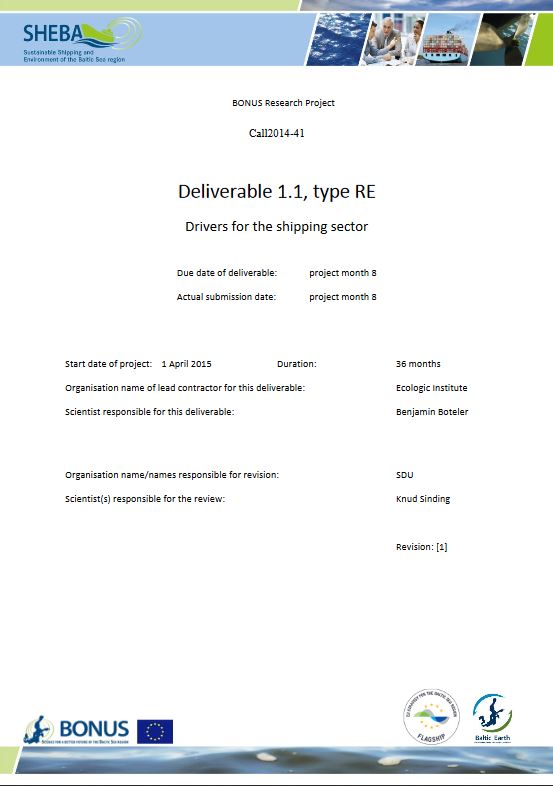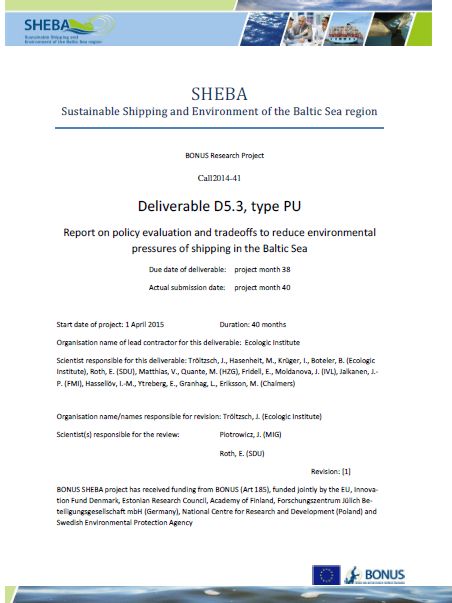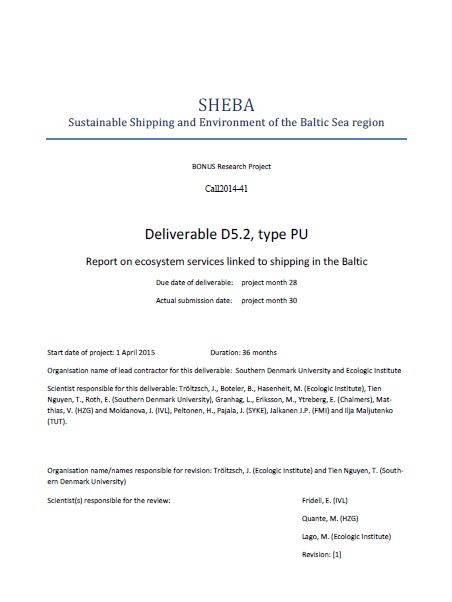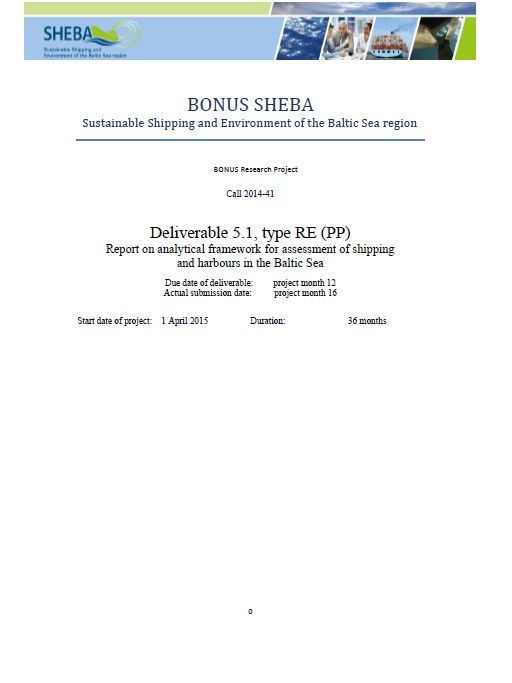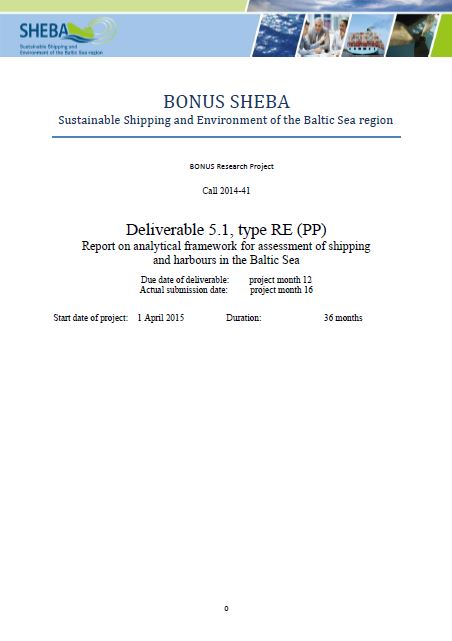This report presents scenarios for shipping in the Baltic Sea for the years 2030 and 2040. The following issues are addressed and the impact from shipping in these scenarios on the Baltic Sea region will be studied: What is the effect of a further slow steaming of shipping in the Baltic Sea; What is the effect of a modal shift from land to sea?; What is the impact of an introduction of a NECA by 2021?; What would be the effect if emissions to water from shipping are eliminated?; What would a large introduction of LNG as a marine fuel imply?; What can be done with further environmental regulations for leisure boats? Finally, what can be achieved with measures in ports?
- Language
-
English
- Authorship
-
Benjamin BotelerErik Fridell, Hulda Winnes, Rasmus Parsmo (IVL)Urszula Kowalczyk, Jakub Piotrowicz (MIG)Jukka-Pekka Jalkanen, Lasse Johansson (FMI)Volker Matthias (HZG)Erik Ytreberg (Chalmers)
- Credits
Other contributors (name-affiliation): Ida Maja Hassellöv (Chalmers), Thong Tien Nguyen (SDU), Markus Quante (HZG), Jana Moldanova (IVL), Manuel Lago (Ecologic Institute), Ilja Maljutenko (TUT)
- Funding
-
BONUS Secretariat (EEIG) (BONUS Secretariat), International - Year
- Dimension
- 52 pp.
- Project
- Project ID
- Table of contents
-
Click to show full table of contents
LIST OF TABLES
LIST OF FIGURES
1 INTRODUCTION
1.1 Background
2 APPROACH AND METHODOLOGY
2.1 Scenario development
2.2 Overview of studies developing scenarios and conducting assessments of future changes
2.3 Approach for choosing scenarios
2.4 Stakeholder consultation
2.4.1 Technical development
2.4.2 Socio-economic development
3 BUSINESS AS USUAL SCENARIO
3.1 Global development trends
3.2 Cargo transport volumes
3.3 Maritime fleet development
3.4 Passenger traffic, passenger/cargo ferries
3.5 Cruisers
3.6 IHS Global Insight Scenario until 2030
3.6.1 Dry bulk trade 2011-2029
3.6.2 Dry bulk imports
3.6.3 Dry bulk exports
3.6.4 Trends in vessel sizes
3.6.5 Transport of passengers
3.6.6 Fuel trends
3.6.7 NOX technical code
3.6.8 Slow steaming
3.7 The BAU scenario in SHEBA
4 SINGLE SCENARIOS
4.1 Slow steaming scenario
4.2 Modal Shift from land to sea
4.3 NECA 2021
4.3.1 Background
4.3.2 Scenario construction
4.4 Zero emissions into water
4.5 LNG
4.5.1 Background
4.5.2 Scenario construction
4.6 Regulations for leisure boats
4.7 Port measures
5 CUMULATIVE SCENARIOS
5.1.1 SSP1 – Sustainability
5.1.2 SSP2 – Middle of the Road
5.1.3 SSP3 – Fragmentation
5.1.4 Summary of shipping developments in the SSPs
6 BIBLIOGRAPHY - Keywords
Hasenheit, Marius and Jenny Tröltzsch (2018): Policies for Sustainable Shipping in the Baltic Sea - a ranking. SHEBA Policy Brief. BONUS Research project SHEBA.
Quante, Markus; Insa Puchert; Katrina Abhold et.al. 2016: Brief of Stakeholder Meeting: Considerations for the Baltic Sea Shipping Sector.
